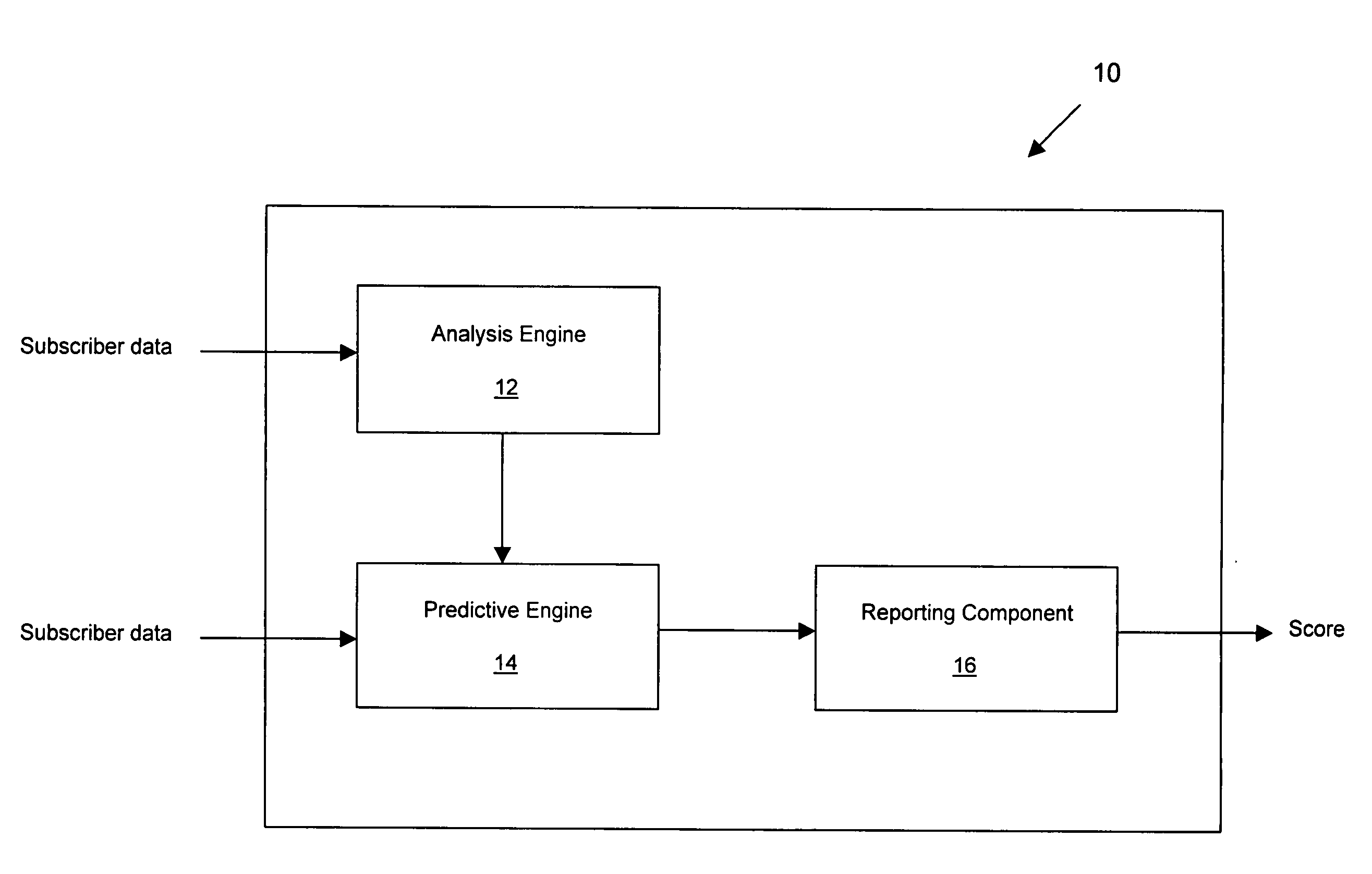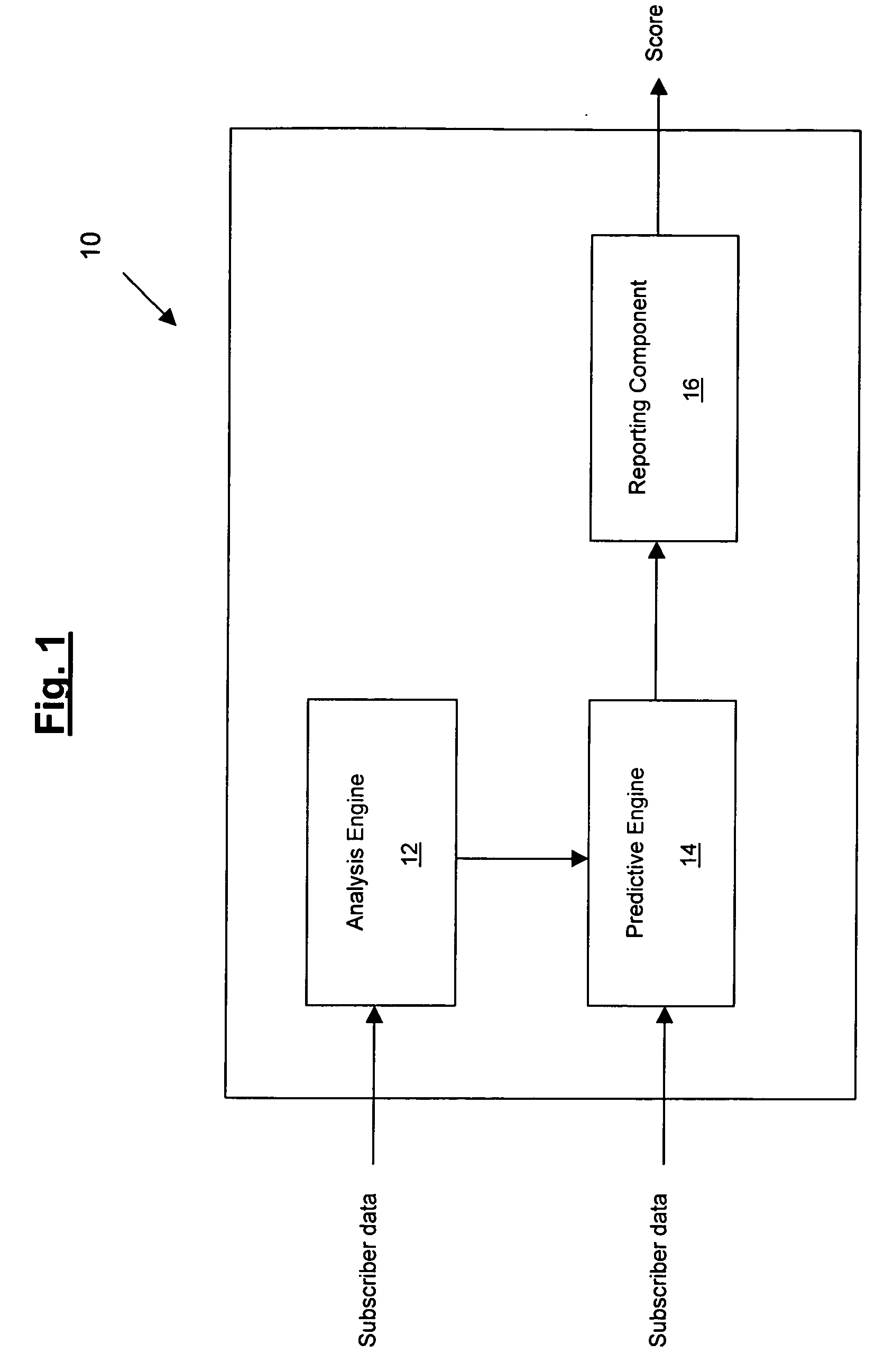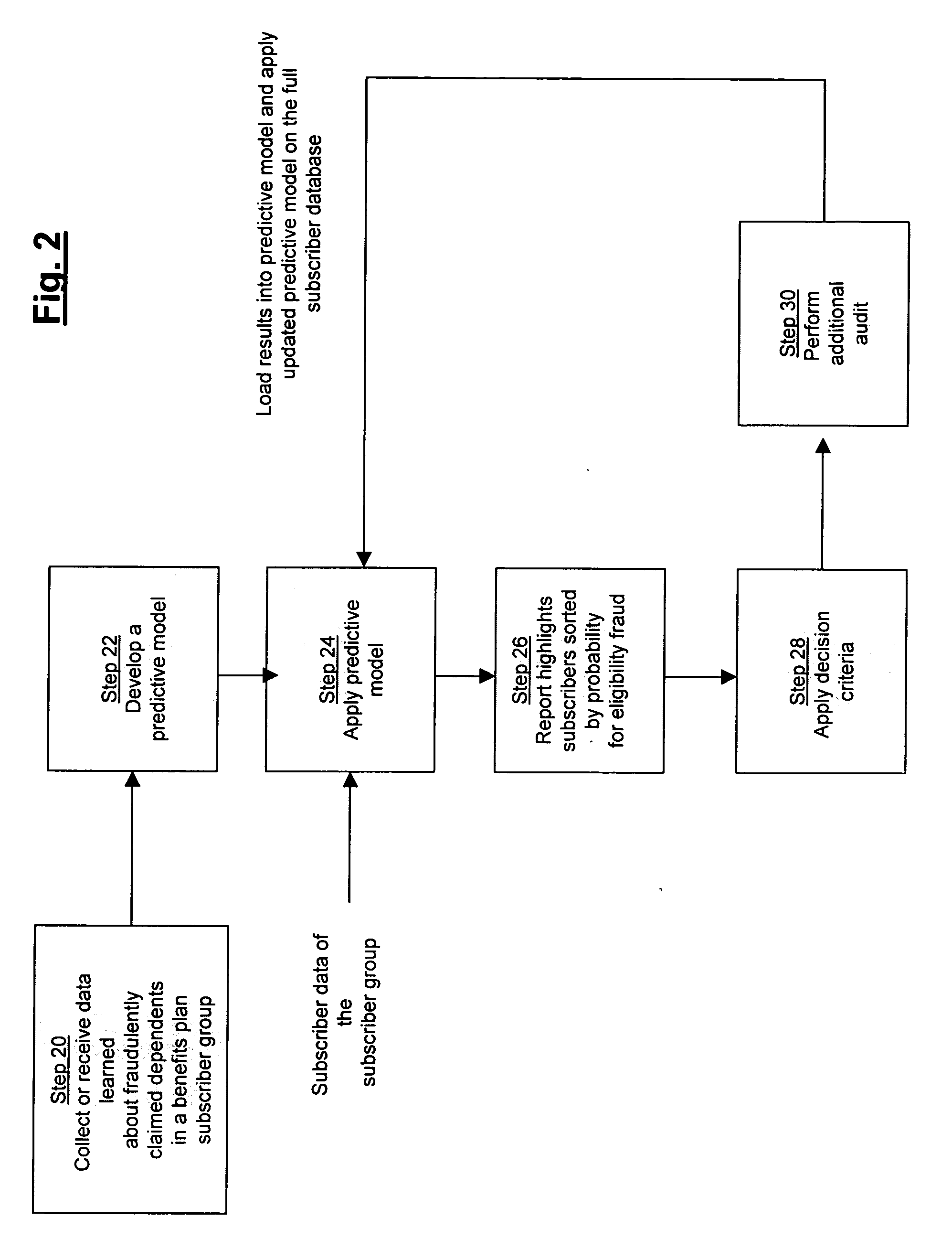Method and system for reducing dependent eligibility fraud in healthcare programs
- Summary
- Abstract
- Description
- Claims
- Application Information
AI Technical Summary
Benefits of technology
Problems solved by technology
Method used
Image
Examples
case study 1
[0132] A.
[0133] With reference to FIG. 6, a case study was performed to test the effectiveness of the present invention for reducing dependent eligibility fraud in a healthcare benefits plan. At step 70 of this study an amnesty audit was conducted for a subscriber group consisting of 15,020 subscribers having dependent coverage. As a result of the amnesty audit, 4.7% of all subscribers self-identified themselves as maintaining an ineligible dependent and voluntarily removed their ineligible dependents from coverage under the plan. At step 72 of this study, a predictive model was developed using the subscriber data collected from the amnesty audit, which included data of subscribers reported to have maintained an ineligible dependent.
[0134] At step 74 of this study, subscriber data of all subscribers was applied to the predictive model and a score was generated for each subscriber, wherein the score indicated a probability that the subscriber was maintaining an ineligible dependent ...
case study 2
[0137] B.
[0138] With reference to FIG. 7, a second case study was performed to further test the effectiveness of the present invention for reducing dependent eligibility fraud in a healthcare benefits plan. At step 90 of this study an amnesty audit was conducted for a subscriber group consisting of 9,448 subscribers having dependent coverage. As a result of the amnesty audit, 3.7% of all subscribers self-identified themselves as maintaining an ineligible dependent and voluntarily removed their ineligible dependents from coverage under the plan. At step 92 of this study, a predictive model was developed using the subscriber data collected from the amnesty audit, which included data of subscribers reported to have maintained an ineligible dependent.
[0139] At step 94 of this study, subscriber data of all subscribers was applied to the predictive model and a score was generated for each subscriber, wherein the score indicated a probability that the subscriber was maintaining an ineligi...
PUM
 Login to View More
Login to View More Abstract
Description
Claims
Application Information
 Login to View More
Login to View More - R&D
- Intellectual Property
- Life Sciences
- Materials
- Tech Scout
- Unparalleled Data Quality
- Higher Quality Content
- 60% Fewer Hallucinations
Browse by: Latest US Patents, China's latest patents, Technical Efficacy Thesaurus, Application Domain, Technology Topic, Popular Technical Reports.
© 2025 PatSnap. All rights reserved.Legal|Privacy policy|Modern Slavery Act Transparency Statement|Sitemap|About US| Contact US: help@patsnap.com



